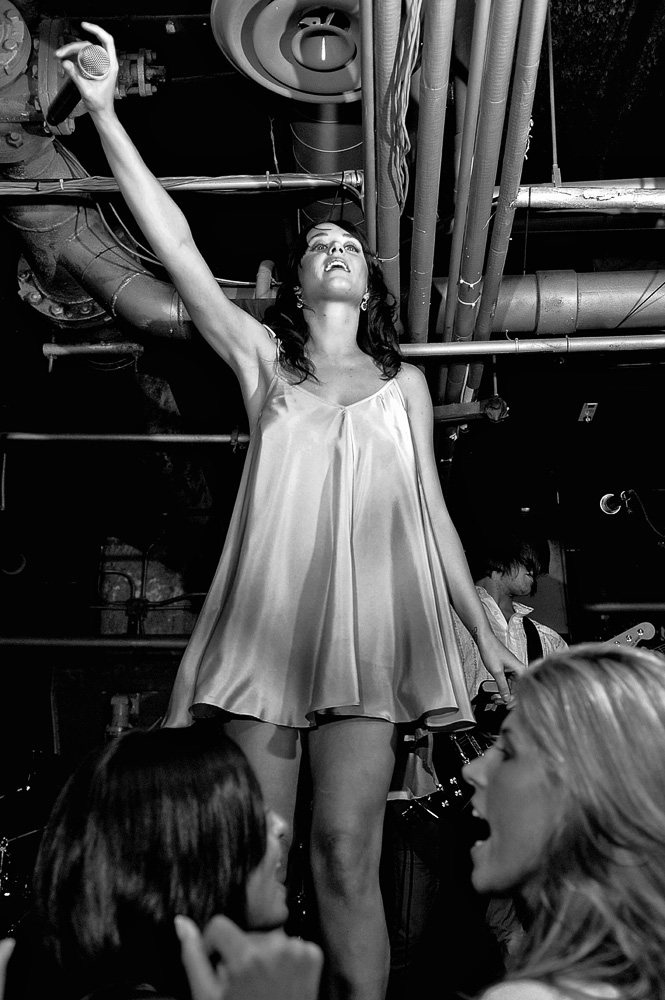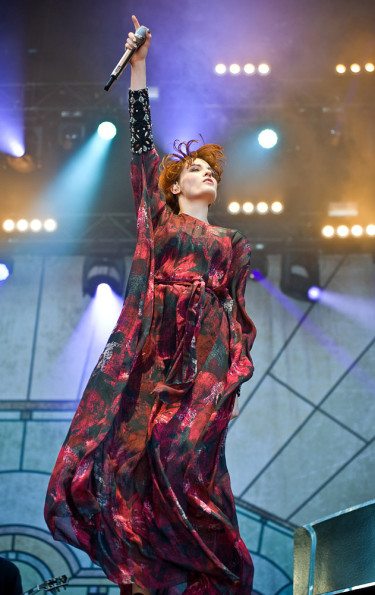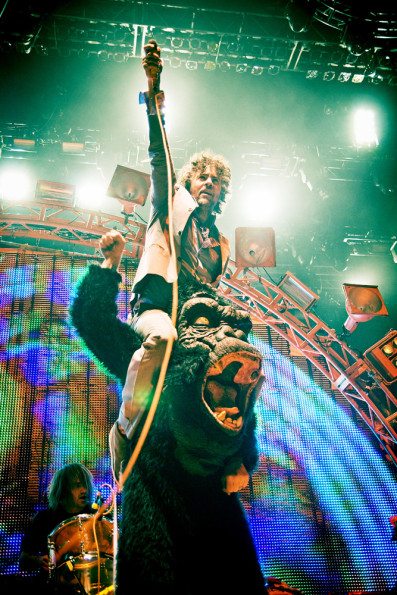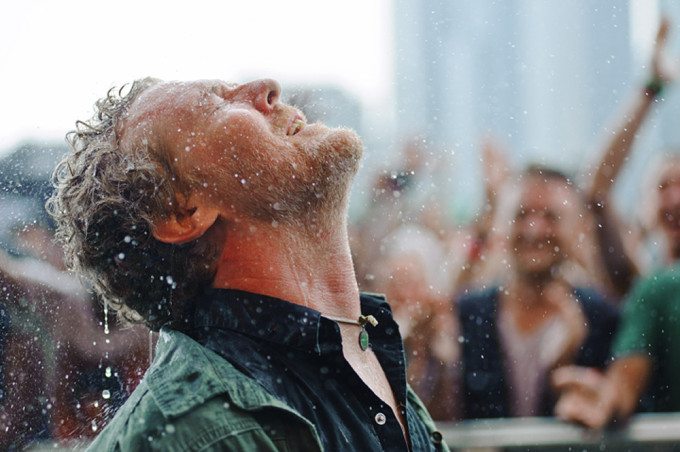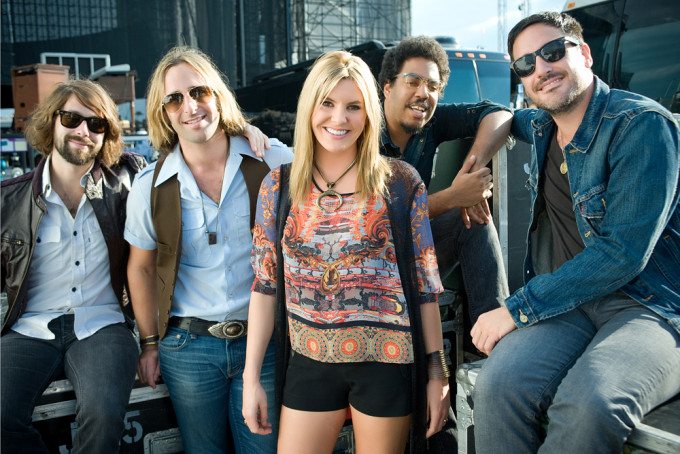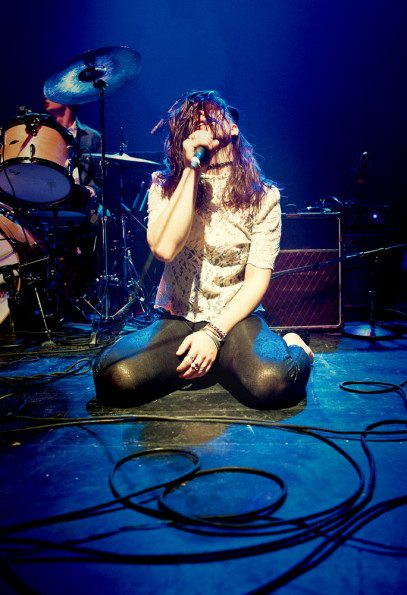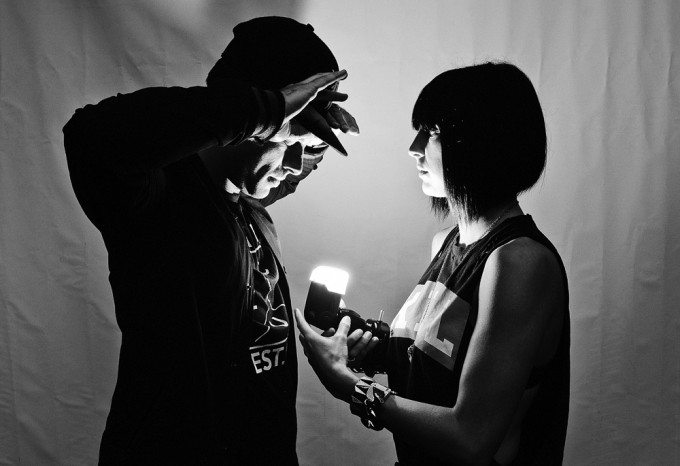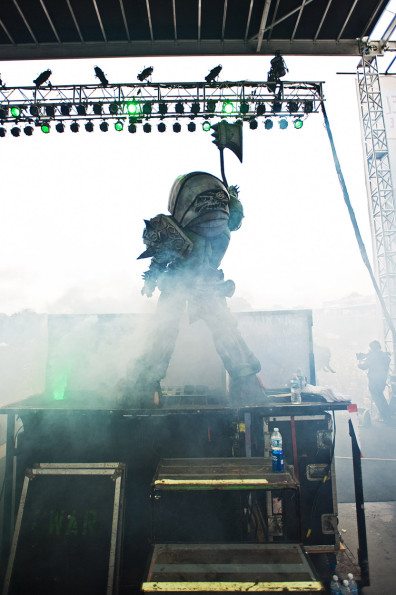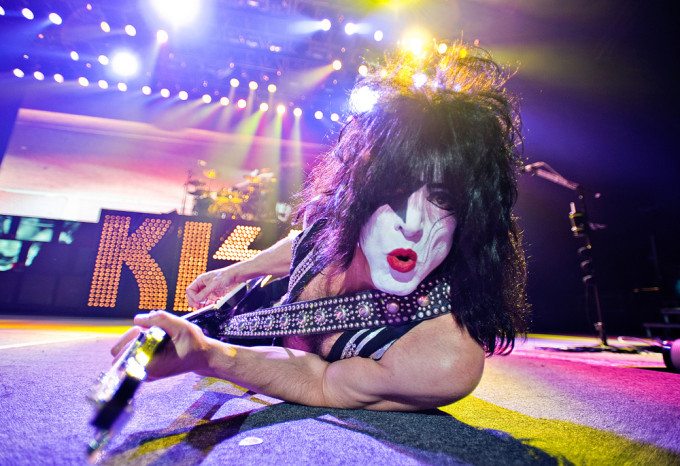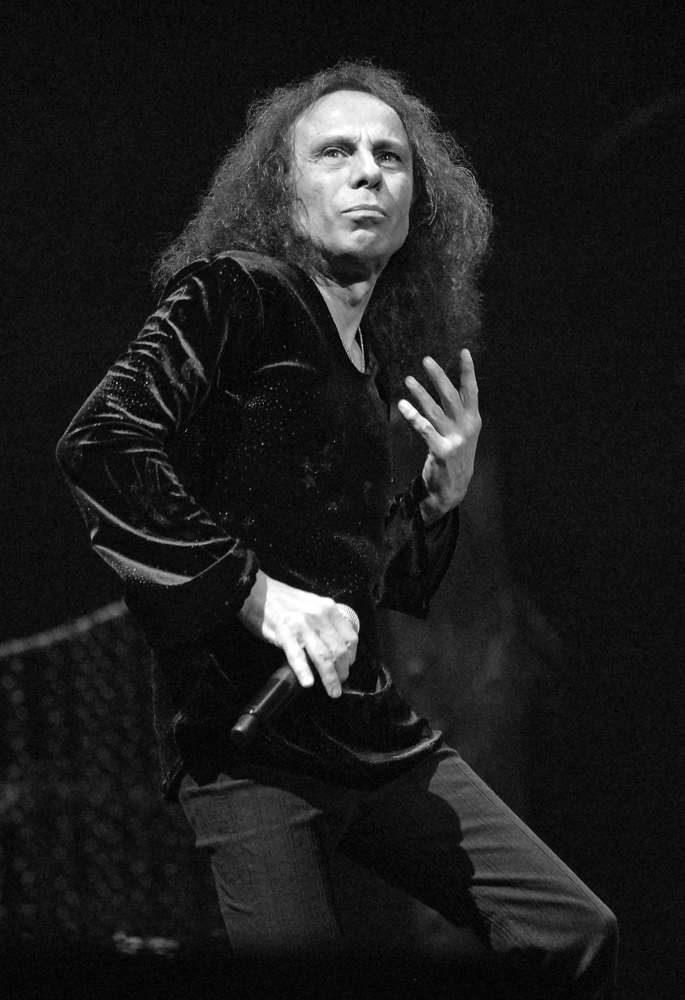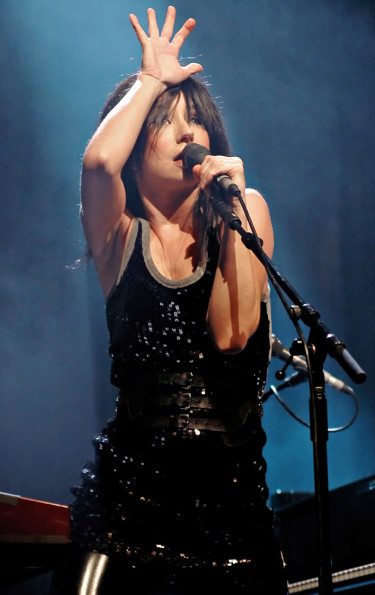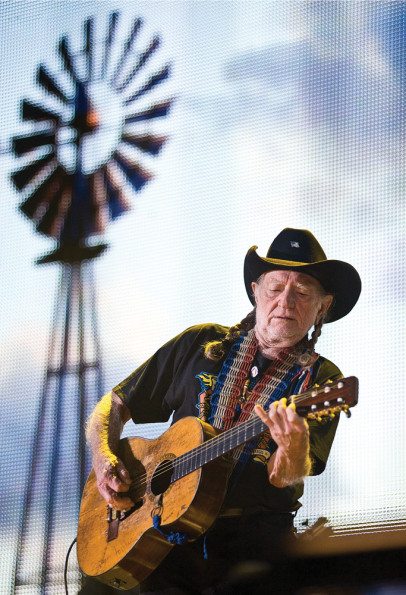Last Updated on 01/25/2015 by Chris Gampat
All images by Timothy Hiatt. Used with permission.
Photographer Timothy Hiatt is one of the most in-demand music photographers in the business right now. Not only is the man talented, but he has a lot of insight to share about shooting concerts and music. Tim is based in Chicago and has shot major acts like Katy Perry, Kiss, and Florence and the Machine, among many others. He started as an Art Director and eventually got into shooting from the pits.
We recently asked Tim for an interview about the music industry, and his humor is probably one of the reasons why he works so well with others.
Phoblographer: How did you first get into photography.
Tim: I started like a lot of others with a photography class in high school, then with a couple more in college. However I always just did it as a hobby while I pursued a few different career options. I didn’t actually think about doing it as a career until later. Like most people that find something they truly love after a few false starts, I often kick myself for not seeing it as a viable option sooner. But, you live and learn.
Phoblographer: What attracts you to concert and music photography. How did you first get into it?
Tim: I first got into shooting shows – and this is what actually set me on the path to being a professional photographer – when I was working as the Art Director at a small music magazine here in Chicago. We would send reviewers out to shows, but only rarely would we have someone shoot them as well. We’d just use press photos or even no photos at all in some cases. And even when we did get shots in, I’d look at them and think “That doesn’t look so hard, I could probably go get some passable shots.” Granted, it’s ten years in and I’m still waiting to get a passable shot or two, but that’s another story.
Luckily, I was in a position where I was working with an editor that agreed we should have a bigger visual and photographic presence, and as such I was pretty much able to write my own ticket as to what, where, and when I shot. (Spoiler alert: I shot anything and everything I could).
So we went from having virtually nothing to go with the reviews to sending me (as well as other photographers) to just about everything we could. On top of that, I would occasionally shoot for the feature articles as well. We also set up an online gallery for shows even if we didn’t review them.
I believe I’m attracted to concert and music photography because there’s always the anticipation of something new and different happening, at least I always hope for that. I hope that on any given night, with any given performer, I’m going to have the opportunity to catch a great moment and maybe, just maybe, get that shot that will live on long after I’m gone. I go into each show thinking that somehow this will be the night I magically become Jim Marshall and get the shot of Hendrix burning his guitar, or Pennie Smith capturing Paul Simonon smashing his bass, which will go on to be the “London Calling” cover, or Ebet Roberts getting shots of The Ramones at CBGB.
Of course, reality quickly surfaces to beat me severely about the head and ears, and I realize that I will never come close to achieving those goals. However, knowing that doesn’t stop me from trying.
Phoblographer: How much time would you say is dedicated to actually shooting on a given week vs all of the other work that goes into running a photography business?
Tim: That really depends on the time of year. This business can be extremely seasonal, not just for concert photography but of any type of shooting. There are just more events, concerts, appearances or what have you, to shoot in the summer than there are in February. I’ve had times where I’ve gone from December to the first of March and shot maybe five or six things. It’s rough, but it’s tempered with the fact that I could shoot 40 or 50 things in August and September alone. For reasons I simply can’t fathom, people just don’t seem to do as much in Chicago when it’s 5 degrees outside.
Weird, huh? So a lot of the winter activity is reaching out to people just to say “Hey, how ‘ya doin? Just wanted to let you know that I’m still here, ya know–just in case you need me for anything…”
That, and watching the weather channel a lot.
“I go into each show thinking that somehow this will be the night I magically become Jim Marshall and get the shot of Hendrix burning his guitar, or Pennie Smith capturing Paul Simonon smashing his bass, which will go on to be the “London Calling” cover, or Ebet Roberts getting shots of The Ramones at CBGB.
Of course, reality quickly surfaces to beat me severely about the head and ears, and I realize that I will never come close to achieving those goals. However, knowing that doesn’t stop me from trying.”
My friends in NY or LA say there’s a seasonal decline there as well, but not nearly as bad as it is in other parts of the country for obvious reasons.
However, if you look at just an average week, not too busy, not too slow, it’s probably a 35/65 split between shooting and the business end. And yes, I factor the editing and post production time into the 65%, along with billing and invoicing, setting up and taking care of the logistics for upcoming shoots, as well as tending to the gear whenever problems rise up.
“For reasons I simply can’t fathom, people just don’t seem to do as much in Chicago when it’s 5 degrees outside.”
Phoblographer: Networking is really important throughout all of the photo industry, but do you feel that it’s even more important in music? You’re a great person to ask because you’ve also shot red carpet events.
Tim: Networking is extremely important no matter what line of work you’re in, but I don’t think it’s necessarily more important in music. As in just about all walks of life, who you know is obviously important and can open certain doors for you, but it’s what you do once you get in that determines whether the other doors in the room will swing open or slam shut. Once you make a connection, you have to prove to them that you
A) know what you’re doing, and
B) you can shoot and act like a professional.
An example of a time a situation that plays into that concept arose for me is when I was assigned to shoot a screening for one of Common’s recent films. For some reason the step-and-repeat was taking place outside of the theater, which I found odd but not exactly unprecedented. He came out, did the interviews and posed for the photos no muss, no fuss, and that was that. As I packed up the gear and started to leave through the theater, I saw that there was another step-and-repeat set up inside. Since I had worked with the girl from the PR firm before, I asked her what was going on.
“Oh, Joseph Gordon-Levitt is here for a screening tonight,” she said.
Well then.
“Do you mind if I step in and shoot it?” I asked, having not heard a word about it until just then.
“Sure, knock yourself out” she said.
Now if I hadn’t shown in the past that I knew what I was doing, or if didn’t have a good relationship with the firm, she could have easily said that there wasn’t have enough room, or the press list was closed, or just flat-out said no and walked away.
I think a mistake photographers starting out often make is in thinking that networking and making connections means only cultivating relationships with label reps or band managers or club owners. That’s all well and good; and it’s also incredibly myopic. It seems so obvious, but a lot of times shooters don’t establish relationships with their fellow photographers. DO IT!
Yes, there are a lot of shooters out there that treat this business as a roll-around-in-the-mud street fight, where everyone else with a camera is an enemy. Those are usually the ones who have no idea how to conduct themselves in the pit, and therefore are worthless.
However if you act like a professional, if you act like you’ve been there before, it doesn’t matter who you are, who you’re shooting for, or what you’re shooting with. You could be shooting with a point-and-shoot, an iPhone, hell you could shoot with a pinhole camera for all I care. If you treat the other shooters with respect and realize that everyone is there for the same reason, then you’re gonna get treated with the same respect and consideration. You’re also gonna be remembered. But if you’re one of the inbreeds that stands center stage with your camera held as high above your head as you can, or if you just plant yourself in one spot, shoot a few shots, then dance and sing along ’cause they’re your favorite band, odds are you’re gonna hear about it – very loudly, and with language that isn’t considered decent in civilized society. For better or worse, I’ve gotten a bit of a reputation for not suffering fools in the pit gladly.
The point is, making connections with other photographers is more likely to pay off than not. Someone might be asked to do a job, but for some reason they’re not available. When the client asks if they might be able to recommend someone, who’s name are they going to give – someone who they’ve enjoyed working around or the chucklehead standing in the middle periscoping? I recommend people all the time, and I’ve been recommended by others as well.
Life’s too short to treat what you do as a battle. The simplest and best advice I ever got was when Mick Rock (yeah, I know, I just name dropped. Sue me…) told me “Don’t worry about it. There’s plenty to go around.”
Phoblographer: Talk to us about the gear that you use and why.
Tim: I’ve always been a Nikon guy, so the gear bag is stocked with three D700s, three go-to lenses (a 17-35, a 28-70, and an 80-200, all f2.8s) a couple of SB700 flashes, and a 2x extender. (That’s just the travel stuff, my studio gear is a whole different checklist.)
I shoot Nikon simply because that’s what I learned on and have always had around, and the D700s because I still think that they’re the finest bodies Nikon has ever made. For varying reasons, there’s been nothing about the newer models that have come out since that has really made my socks roll up and down. They’ve been good, mind you, but they haven’t been upgraded in any significant way that I see as a major step up from the D700s. The yearly cost in gear and gear maintenance is high enough as it is. Why toss aside something that works just ’cause there’s a shinier newer model? I’m not DiCaprio for Christ’s sake!
Phoblographer: If you had to list them, what performers would you say have given you the most keeper shots at the end of a concert shoot vs the images that you throw away?
Tim: From a strictly shooting standpoint, give me an act that will put on a show over a naval gazing emo band any day of the week. Put aside your musical taste and look at things clinically – you may absolutely love a band like The National or Alt-J (and I certainly put myself in the fan category), but they’re far from the most luminous stage performers around. Yet say what you want about Miley Cyrus or Katy Perry, they know how to create a spectacle, and there’s more than ample opportunity to get good shots. Anyone that shoots one of their shows and doesn’t get anything good should just stop. Get out of the business. They’re giving it to you and all you have to do is take it.
“But if you’re one of the inbreeds that stands center stage with your camera held as high above your head as you can, or if you just plant yourself in one spot, shoot a few shots, then dance and sing along ’cause they’re your favorite band, odds are you’re gonna hear about it – very loudly, and with language that isn’t considered decent in civilized society.”
Truth be told however, I don’t think I’ve ever gotten the kind of shots I would have liked to have gotten. In my life, I’ve taken maybe six or seven shots that I’m truly proud of, so let’s not call them keepers. For the sake of argument let’s call them “shots I haven’t hated as much as the others.”
There are a few performers that I’ve shot repeatedly and have had fairly good luck with such as Florence And The Machine (she seems to know exactly where every camera is, and will give each and every one of them a good shot), Gwen Stefani (with and without No Doubt), Lykki Li (mesmerizing performer) and especially Grace Potter And The Nocturnals (Grace has without a doubt the best memory of anyone I’ve ever met. It’s scary actually). I seem to have better luck photographing women artists. I guess it make sense – I enjoy looking at women more, so I suppose I take greater care with them. I don’t know.
One of the artists that I never would have expected to be so fun to shoot though is Rush. I’ve shot them on several occasions, and I can’t see myself ever saying no when someone askes me to shoot them again.
But the act that gave me the most “shots I haven’t hated as much as the others” for the time I had to shoot them was KISS, and everyone that’s covered them knows how right I am. They also supplied my favorite “from the pit” experience, if you’ll indulge me…
“Yet say what you want about Miley Cyrus or Katy Perry, they know how to create a spectacle, and there’s more than ample opportunity to get good shots. Anyone that shoots one of their shows and doesn’t get anything good should just stop. Get out of the business. They’re giving it to you and all you have to do is take it.”
They only give you the first two songs to shoot, but trust me, that’s more than enough since they’re not ones to ignore photographers. Well, a few years ago when they were in town, I was the only one that was credentialed to shoot. Now that sounds great, and for most acts having the pit to yourself would be fantastic. However with them, it turned out to be a helluva lotta work since there’s so much going on. Paul and Gene pretty much spent the entire time mugging for me, which was nice, but I also wanted to get shots of Tommy and Eric at some point as well. Finally, Paul went back to the drum riser so I had my chance to go to Tommy’s side of the stage. I had only been there a moment when I looked over to see Paul at center stage, playing the guitar between his legs and just staring daggers at me, as if to say “What the fuck are you doing over there when I’m doing something over here?”
Sometimes, you just can’t win.
Phoblographer: If you had to define what makes for a really kick ass concert photo, how would you go about describing it?
Tim: I want to try to capture a moment, and it’s kinda hard to describe. It isn’t necessarily the jump shot, or guitar face during the solo, or the singer hitting the high notes. Those situations all make great shots and get all the oohs and aahs, but catching a moment goes a bit deeper. I want to be able to show when the artists goes beyond the simple act of performing. I want to catch them when they’re so into what they are doing that the audience becomes secondary, where they’ve gotten back to what made them love what they do in the first place. They might be remembering why they wrote the song to begin with instead of it just being another line on the setlist, or they might step out of character and let their guard down just for a second. I don’t know.
Like I said, it’s tough to describe, but you know it when you see it. As tough as it is to describe, it’s even tougher to actually get a shot like that. It rarely, if ever, happens during the first three songs.
“In my life, I’ve taken maybe six or seven shots that I’m truly proud of, so let’s not call them keepers. For the sake of argument let’s call them “shots I haven’t hated as much as the others.””
Of course, it’s also a very real possibility that I’m full of shit and have no idea what I’m talking about. It’s possible that jump shots ARE the only real kick ass concert photos!
Phoblographer: What was the biggest problem that you’ve had to overcome business wise as a photographer and how was it resolved?
Tim: I don’t know that I’ve ever had an actual business problem, but I know I do have a problem of living in constant fear that the people I shoot for will suddenly figure out that I’m not really that good. Once they realize that, they’ll probably stop giving me money to shoot things and I’ll have to find something to do amongst the wolves and ne’er-do-wells in the real world.
As of press time, this problem remains unresolved…
Phoblographer: One of the biggest struggles as a photographer is to maintain a work/life balance. What tips can you give to photographers to figure this one out?
Tim: What’s to figure out? If you’re lucky enough to do this for a living, then you more than likely smart enough to realize that it beats the hell out of having a real job. It’s not like working a 9-5 gig where you have to come home and decompress from the everyday stress and strain. I find that the work is my life. And I don’t say that to sound like a pretentious, arty, hipster. Think about it. What does a person with a 9-5 “real” job do when they see that their favorite band is coming to town? They make plans to do whatever they have to do to go see them. Tickets are bought. If you’re single you probably ask someone out and make a date of it, or you meet up with friends for it. If you’re married with kids, baby sitters are hired. All so they can have a great night out, get away from it all and relax.
Now realize that the things and events they’re going to and enjoying as a brief respite from the daily grind are the things photographers are going to and enjoying as well, only we’re there to pay the rent.
Of course, since very, very, very few people can make it shooting concerts alone (I know I sure as hell can’t) you’ll shoot loads of other things. And of course you’ll have the rare gig that turns into an absolute nightmare. You’ll want to put your fist through a wall. You’ll want to grab the person you’re shooting for by the neck when they want to look at every shot you take in camera, only so they can make a few oh-so-helpful “suggestions”. You’ll want to scream to whatever pagan deity you chant to when they say they want all 2000 raw shots you took that evening. But you know what? Those gigs end, and then it’s off to the next one. It may be better, it may be worse, but that not knowing is part of the excitement.
Don’t get me wrong, I have nothing but respect for people with 9-5 gigs. I have no doubt that the vast majority of the workforce enjoy and even love what they do as well. But I don’t know too many who continue to do it after they punch out. As a working professional photographer, you have to be in the mindset to be ready to shoot at a moment’s notice, even if it’s just a matter of seeing something while you’re walking down the street that catches your eye and you instinctively know it will make a good shot. So you whip out your phone and snap it. Maybe it’s something worthwhile, maybe not. The point is, it’s not something you turn off. Sure, there’s the editing, billing, glad-handing and palm-pressing you have to do during the times you aren’t actually clicking a shutter, but those are things to be enjoyed as well. The accomplishment isn’t just an image you think is worthy to be put in a frame, the accomplishment is everything that lead up to it, and everything that resulted from it.
That’s why I say it beats having a real job, and I hope to be able to do it for a long time to come.
Or at least until I’m found out, that is…
You can follow Tim Hiatt on Twitter, Tumblr, and Instagram.


